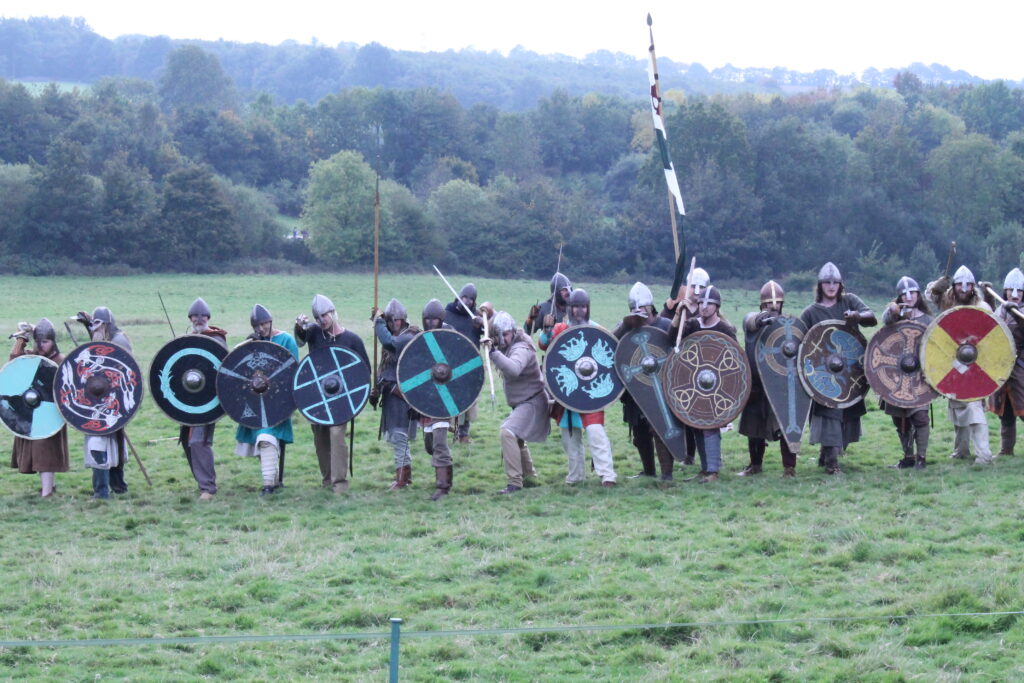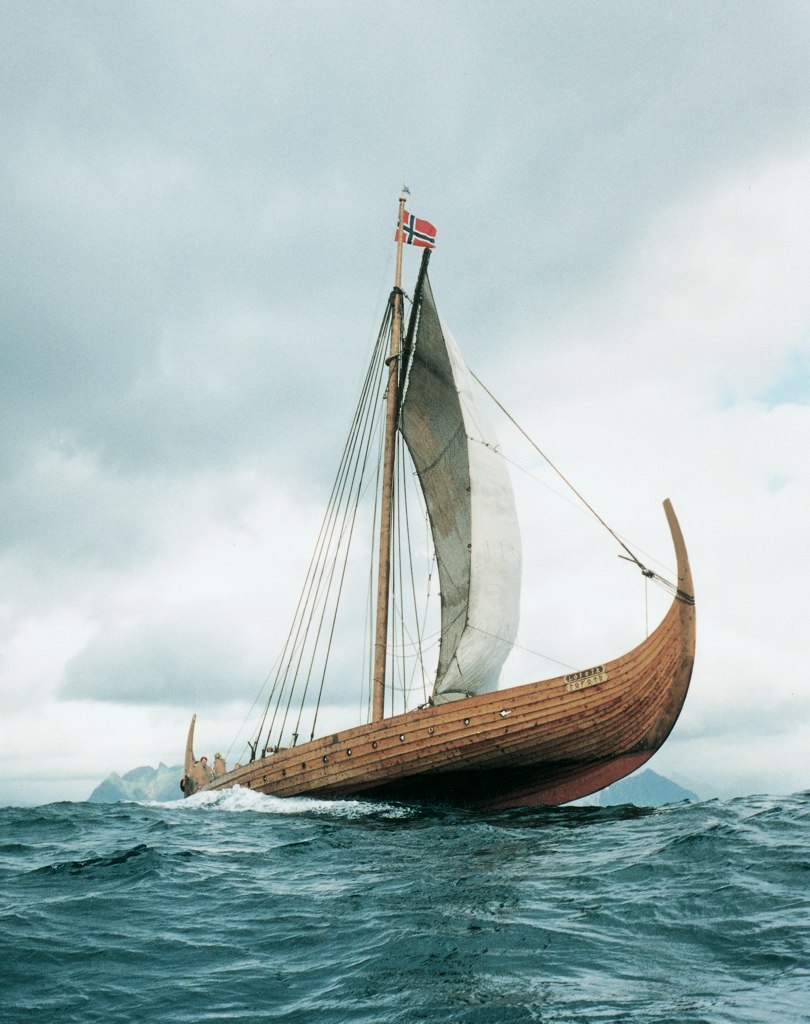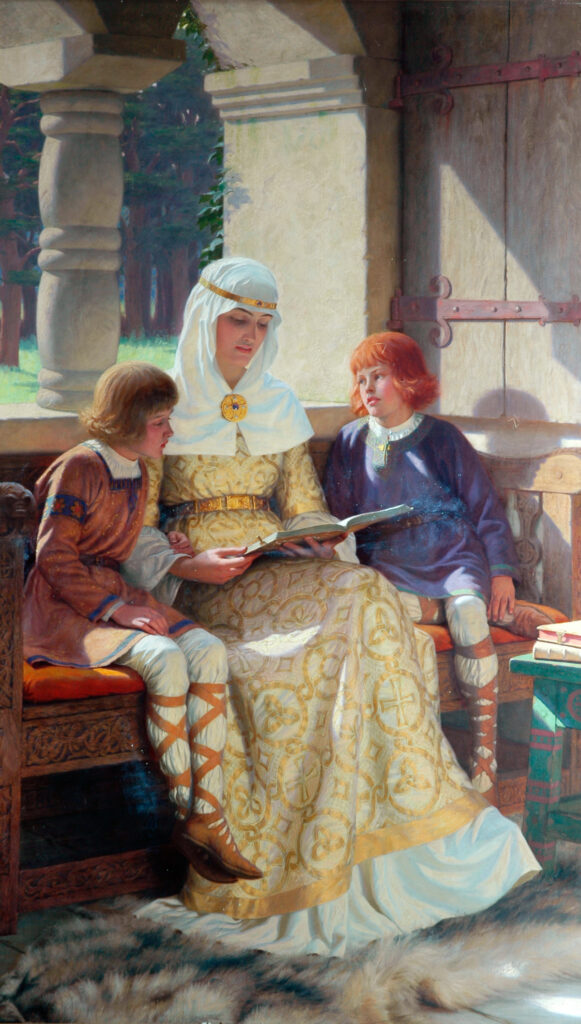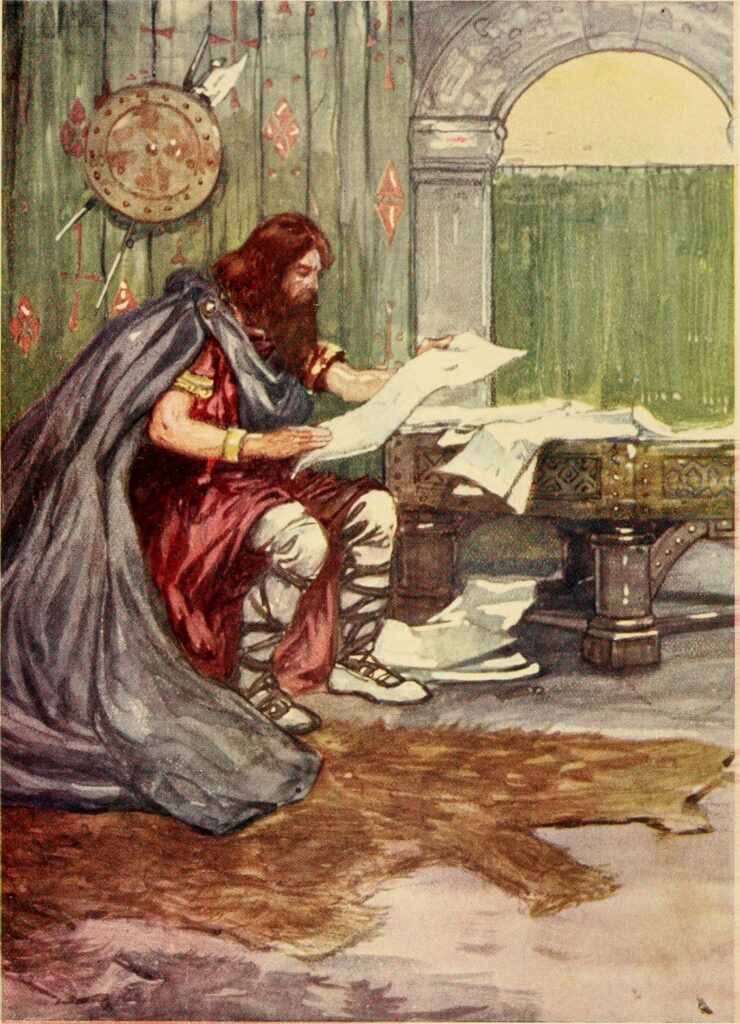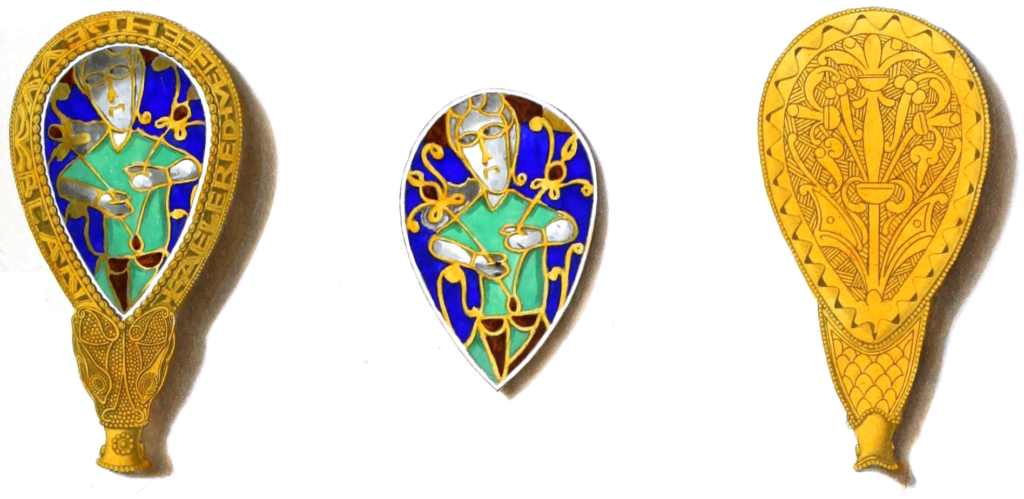
It was a brilliant stroke, an attack, through the dark and chill of a winter’s night, that won a kingdom. Guthrum led his Viking war band south, riding hard from his base in Gloucester, heading for the royal estate at Chippenham. They were going to kill a king.
Traitors At Home
Riding fast, the Viking war band made its way through the winter locked countryside. Although they rode through Wiltshire, land owing fealty to Alfred, king of Wessex, no hands or swords were raised against them. Their lord, Guthrum, had made his preparations well. In the months before their winter ride, Guthrum had made surreptitious contact with the ealdorman of Wiltshire, one Wulfhere. Like many of the great men of Wessex, Wulfhere had lost faith in his young king, Alfred. The agents Wulfhere had received from Guthrum during the autumn of 877 had whispered promises to him, promises of preferment, possibly even of a throne. For the Great Heathen Army that had conquered the Anglo-Saxon kingdoms of Britain over the last 12 years had in Mercia and Northumbria installed client kings rather than ruling directly. For Wulfhere, maybe the prospect of a throne, even one held at the behest of Guthrum, might have seemed more attractive than more years bolstering Alfred’s uncertain regime. Whatever the blandishments or threats uttered by Guthrum’s agents, they worked. On that night in early January, the men that Wulfhere had set on the border between Anglo-Saxon Wessex and Danish-controlled Mercia stood aside as the king of the Danes rode past them.
To Catch a King
For Guthrum, this was the final push towards making himself the pre-eminent king in Britain. Already king of East Anglia, and with a puppet installed on the throne of Mercia beholden to his support, only the kingdom of the West Saxons held out against him. This winter attack was Guthrum’s third attempt to crack the Wessex nut and, as with his other attacks, he carried it out with his customary secrecy and speed. The aim was nothing less than to kill the king, celebrating the last days of the long Christmas feast at his royal estate in Chippenham. After a week or more of feasting, Guthrum hoped to find Alfred and his retainers bloated with food and sodden with drink: ready pickled for the killing.
But word reached Alfred just in time. Perhaps one of Wulfhere’s men, gagging at the silence enjoined on him by his ealdorman, rode south ahead of the Danes, bringing warning to Alfred and his family. As the realisation sank in, Alfred was faced with a sudden, life-or-death choice. Stay, and make a stand with the men of his household, or run. Part of Guthrum’s appeal to the disaffected magnates of Wessex was that their young king was unable to protect them. By running, Alfred would be making that claim real: he was unable even to protect his own family. But staying meant a fight against unequal odds with Guthrum’s picked assassination squad.
King on the Run
Alfred ran. With his family and the men of his household he fled, heading west, towards the marshes of Somerset. Arriving at the all but deserted hall, Guthrum pulled the news of the direction of the king’s flight from a left behind servant. And, hearing the news that Alfred had fled to the west, Guthrum smiled. He had planned for this. If the young king escaped the net in Chippenham, Guthrum had cast another to catch Alfred as he tried to escape. Another Viking army, led by Ubba, the last survivor of the sons of the legendary Ragnar Lothbrok, was even now sailing down the Bristol Channel to make landfall in north Devon. Alfred was about to be caught between two armies. The hard Wessex nut was shortly to be cracked.
But this was when Guthrum’s carefully worked out strategy started to unravel. Despite Ubba’s fearsome reputation and the fact that he was carrying the fabled raven banner of the sons of Lothbrok, the army he led was defeated and Ubba himself was killed by a surprise attack from the army of Odda, the loyalist ealdorman of Devon. As for Guthrum, finding himself now tied down having to defend fixed positions as Alfred launched a guerrilla war against him from his stronghold in the Somerset levels, the Viking leader suddenly realised the difficulty of fighting a war against an enemy that could choose where and when to fight. Alfred was starting to out Viking the Viking.
The Final Battle
So it came as a considerable relief to Guthrum to learn, early in May of 878, that Alfred had emerged from the marshes and was assembling an army at Egbert’s Stone east of Selwood Forest. Guthrum had fortified Alfred’s base at Chippenham during the last few months as he had tried to bring Wessex definitively under his control. Now, with Alfred coming out into the open, the matter was there for the settling.
For Guthrum, the news must have brought more relief than trepidation. His men were professional soldiers and now, finally, they would have a chance to come to grips with the phantom that had plagued them these past months. Faced with his own strategic choice – whether to remain behind his defences at Chippenham or to march out to meet Alfred in battle – Guthrum did not hesitate. He marched. With the advantage of mobility – most of his forces had horses – he called in all the patrols that could reach him in time and set out, south from Chippenham. Alfred had come out of the marshes, but Guthrum would choose the ground of their final meeting.
Showdown
With his scouts reporting that Alfred was marching towards Chippenham, Guthrum reacted immediately. Leaving a small garrison in his base, Guthrum marched the Great Army south to intercept the army of Wessex. He took up position on Bratton Castle, an Iron-Age hillfort on the western edge of Salisbury Plain. The old hillfort, long abandoned but with its earth banks still impressive today, rose 740 feet (225 metres) above the farmlands running north towards Chippenham (the Westbury White Horse, a chalk figure cut into the grass, lies on the side of the hill, documented from 1742). From its vantage point, Guthrum could keep watch for miles around for Alfred’s army. Without a water source, it was no place for a main camp, but it was ideal for reconaissance, and provided the high ground should Alfred be willing to close on Guthrum.
As Alfred marched north his scouts brought back their reports: Guthrum had left Chippenham and taken up position on the fort of the old people. Soon, the king could see for himself the Great Heathen Army, their spear points glinting as they looked down from Bratton Castle. Although Alfred had attacked up hill at the Battle of Ashdown, here it was out of the question; the slopes were too steep. But rather than occupying the summit of a hill, Bratton Castle lies on a long ridge. Alfred could lead his men up on to the ridge and then advance on Guthrum. But, shading his eyes to take in the enemy position, Alfred must have grudgingly acknowledged Guthrum’s field skill: by positioning himself on the narrow ridge, the Viking leader had ensured that his shieldwall could not be outflanked. Thus, at one stroke, Guthrum had neutralised Alfred’s advantage in manpower. The Great Army had been whittled away in the previous months.
Choosing the Ground
However, with the narrow neck of land atop the ridge, and the careful use of the ditches marking out the hillfort, Guthrum could funnel Alfred’s shieldwall tight, so it could not come around to outflank him. As Alfred led his army on the long march up hill, the king would have been all too aware that the battle he was about to enter was going to be a brutal and bloody shoving match.
As the two kings dressed their lines, high above the Wiltshire Plain, they both knew this was the crucial battle. The battle-hardened warriors of the Great Heathen Army knew what they were about: they had had years of virtually unbroken conquest and, while their confidence may have been knocked by the unexpected defeat and death of Ubba, there was no reason for them to expect the fate weavers had started sewing a different pattern. The core of Alfred’s army was made up of his personal retainers, man for man, as good troops as the warriors of the Great Army. But the majority of Alfred’s army were not trained soldiers, but farmers and artisans, free men who owed service to their lord, and who fought for their families and their land. Such men marched to battle with whatever weapons they had to hand. Among these men there would be barely an item of armour, and precious few, if any, swords.
Preparing the battle space
The Northmen waited, in solid line, their painted shields interlocked, spears prickling out through the wall like a porcupine. As the army of Wessex approached, the commanders detailed to each flank pushing the men on the inside tighter to stop the shieldwall spreading, the men drummed on the rims of their shields. Boasts, insults, threats rang out as the lines closed and it became clear, to each man in the converging shieldwalls, whom he would face in the enemy line. This was war at its most up close and personal.
In these battles there was none of the clouds of gunpowder smoke that would obscure later battlefields – everything was stark in its clarity. But kings could not take advantage of this clarity by standing back and directing the battle; of necessity, their place was in the centre, in the front rank.
Size does matter
As the battle wore on, sheer fatigue started to play as much a part as battlefield losses. And this is likely where Alfred’s advantage in manpower started to pay off. The sources tell us the battle lasted a long time, long enough for the adrenaline rush of battle to begin to wear off, long enough for even the experienced warriors of the Great Heathen Army to begin to flag against weight of numbers and the sheer, dogged determination of Alfred and his men. Unlike so many other Anglo-Saxon armies before them, they did not break and they did not flee, but, with Alfred safe at the centre of the line and his banner flying, the men of Wessex began to break through the shieldwall of the Great Heathen Army.
When the end came, it was probably quick. The Great Heathen Army broke. The shieldwall cracked open, the exhausted, triumphant, blood driven men of Wessex burst through, cutting men down as they ran, bypassing those who retreated in good order, shields and spears presented outwards, as the lust for spoil and the wonder of still being alive drove them on.
Guthrum, with his ring-given men, the best and toughest of the Great Army, retreated to the tethered horses, and leaping upon them made their getaway. It had all come down to this one battle, the Battle of Edington, and Guthrum had lost.
King of East Anglia
After two weeks’ siege, Guthrum surrendered to Alfred. As Alfred’s God had proven his worth on the battlefield, Guthrum agreed to be baptised, with Alfred standing as godfather, a position that emphasised Alfred’s spiritual and temporal position over Guthrum. The Viking, now bearing the name Æthelstan, withdrew to East Anglia, settling down there reasonably peacefully: there was the odd bit of raiding – what was a Viking who did not go viking? – but no further serious attempt to conquer Wessex. The two kings, Æthelstan née Guthrum and Alfred, also signed a treaty, the text of which survives, that created the Danelaw as a legal entity. The text defined the border between the territories ruled by Alfred and those under Danish law: up on the Thames, and then up on the Lea, and along the Lea unto its source, then straight to Bedford, then up on the Ouse to Watling Street. Guthrum, who had come within a battle victory of taking all of England, lived as king of the Danelaw until he died of natural causes in 890: the man who almost turned England into Daneland.
